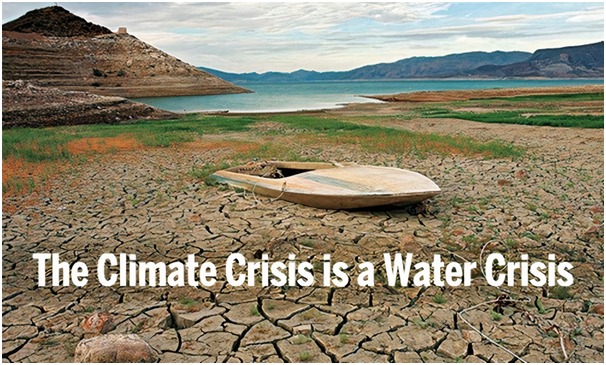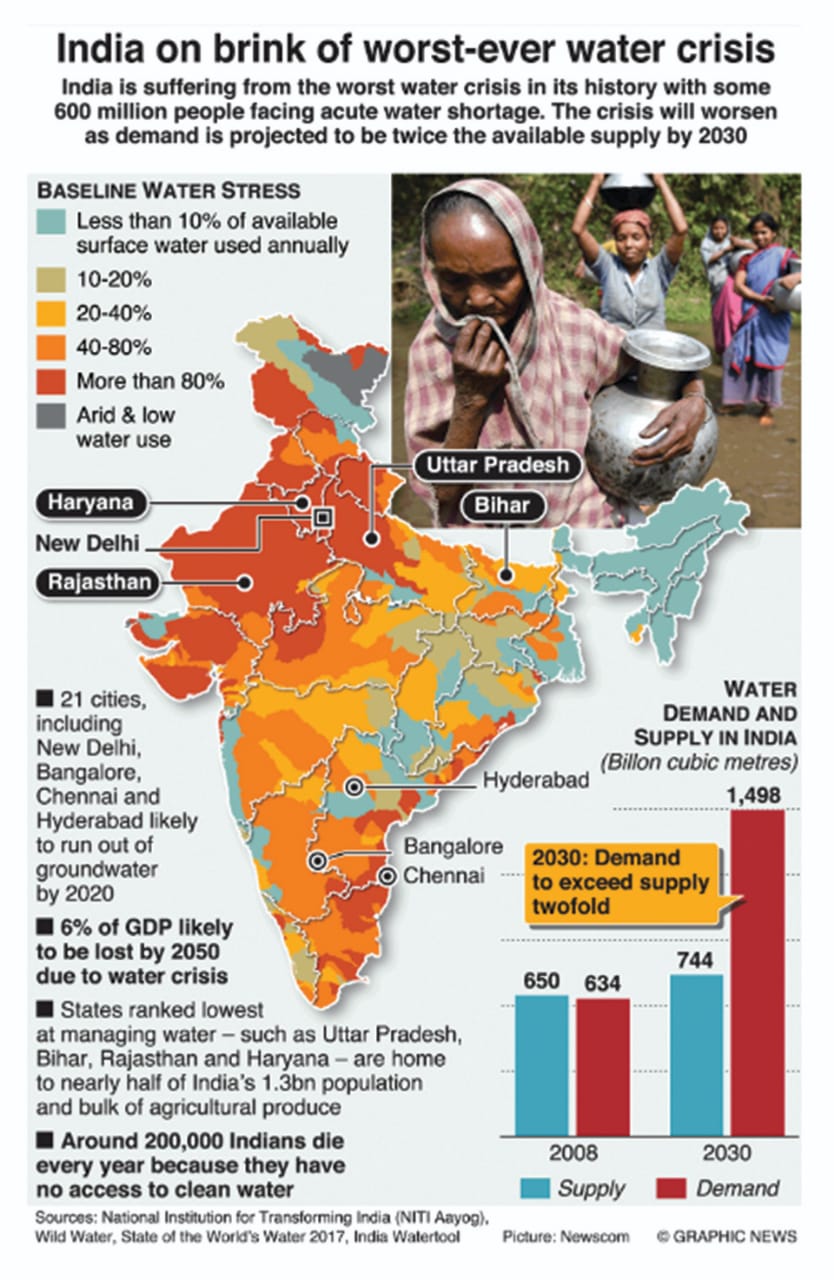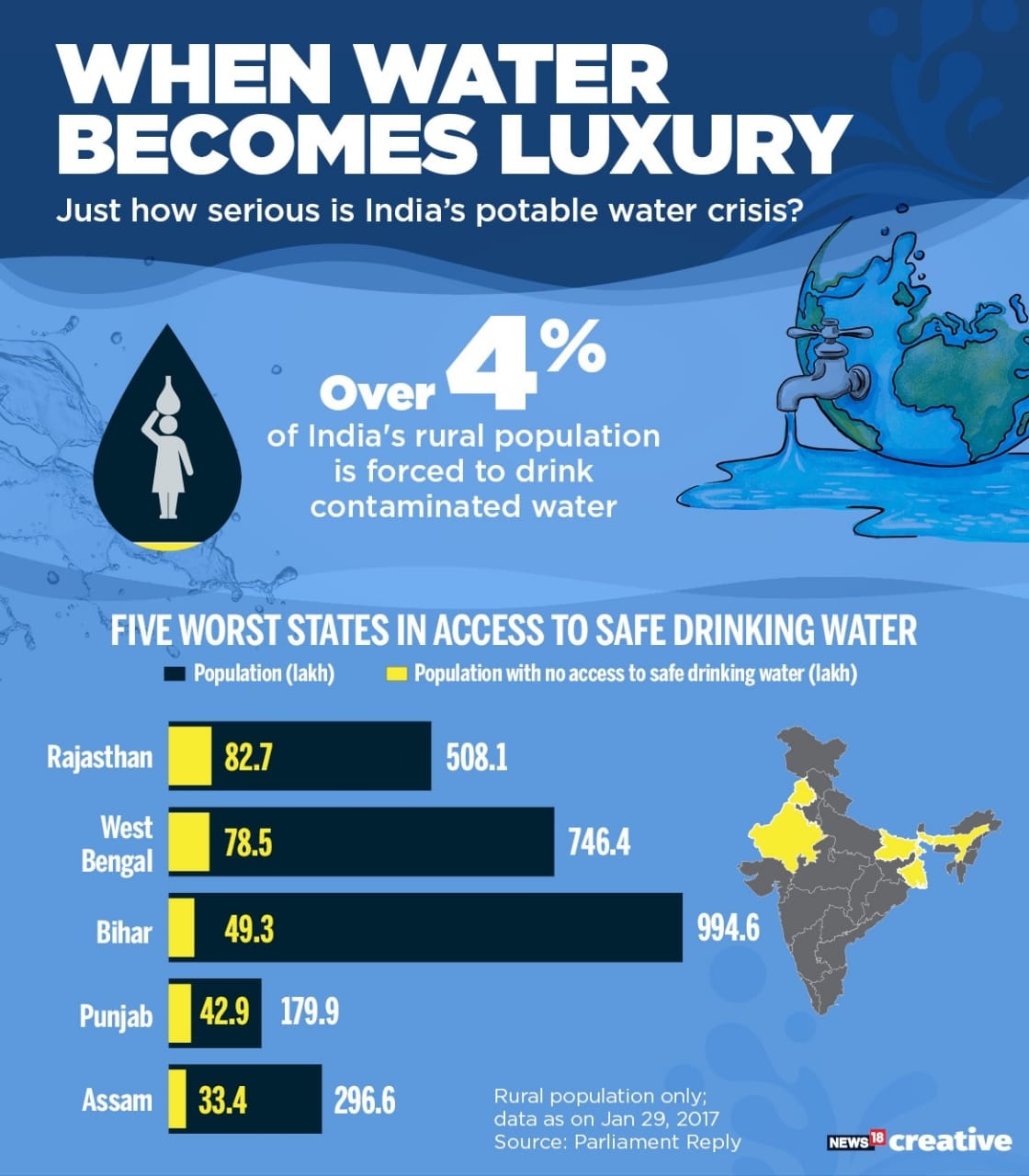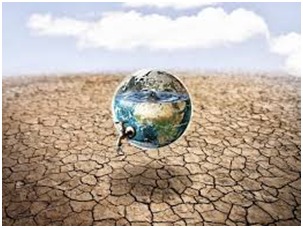Did you know that only 2.5% of all the water in the world is freshwater? And that only 1% is accessible, by accessible, I mean water trapped in glaciers and snowfields. We only have real access to 0.0007% of the planet’s water, that’s all we have to feed and fuel over 6.8 billion people. The lack of clean water is a plague that affects 1.8 billion people every year.

A water crisis is when there is not enough potable water for a population, which in turn leads to drought, famine, and death. Today safe drinking water has become a luxury for people living in drought-hit regions and the African subcontinent. People can be seen walking miles and spending the entire day searching for it. Even if they get it, they have to fight with the waterborne diseases arising from it.
Economic development suffers when basic necessities are not met, and people have to struggle hard for them. Still, we people take it for granted and do not understand the importance of water conservation. Today we will be going over some of the causes, effects, and possible solutions for the water crisis.
“Clean water and access to food are some of the simplest things that we can take for granted each and every day. In places like Africa, these can be some of the hardest resources to attain if you live in a rural area.”
Major Causes of Water Crisis
- Water Pollution
Most of the sources of water in rural areas are terribly polluted due to poor sanitation and lack of waste treatment plants. Overall levels of global pollutants are having a negative effect on the drinking water that is currently clean; as time goes on, this damage will be exacerbated.
- Groundwater over drafting
The excessive use of groundwater in our agricultural industries is leading to diminished yields and wasted water. Over 70% of our water is used to grow crops, and most of it is wasted due to leaky pipes and poor watering techniques.
- Overuse and misuse of water
This leads to more water being wasted and squandered for pointless reasons and leads to further escalations of the crisis. One single hamburger takes 630 gallons of water to produce!
- Disease
A large quantity of the available groundwater in the worst affected parts of the world is ridden with disease due to the lack of proper water treatment and recycling.

- Climate change
Climate change is changing the way water evaporates and where it rains, pushing rainfall further south in both hemispheres. Global warming has altered the rainfall pattern in India dramatically. Previously, average monsoon rainfall spanned 45 days. This number has now decreased to 22 days, with each monsoon having a smaller intensity of rain.
- Mismanagement
Improper training and education lead to a needless waste of safe, clean water every day, as well as overuse in areas that don’t require so much water. Despite being a populous country with diverse geography and climate, India does not have a comprehensive water policy. There are no proper guidelines available for the usage of surface water and groundwater by different sectors and different states.
- Human settlements
Construction of dams, other hydroelectric projects, and water diversion for irrigation has led to systematically destroying large river ecosystems.
- Corruption
Simply put. Some of the people who have the power to help those people in need just don’t care.
- Lack of institutions
Lesser developed countries have no institutions to advise on water treatment and management; this leads to mismanagement and waste
- Lack of infrastructure
Poor regions often don’t have the funds or education to implement proper infrastructures such as waste treatment and recycling plants
- Loss of groundwater
Due to climate change, human expansion and development are leading to loss of groundwater worldwide.
- Groundwater exploitation
In addition to irrigation, groundwater exploitation has also resulted from rapid urbanization as well as extreme groundwater usage by soft drink companies such as Coca-Cola. India uses more groundwater than any other country in the world, and groundwater exploitation has causes accelerated drying of aquifers. The total groundwater used for irrigation has risen from 30% in the 1980s to nearly 60% today.
- Unutilized resources
River basins, catchments, and watersheds have not been properly utilized for water and soil conservation purposes, which in turn affect the hydrology of the river basins.
- Unfair pricing of water
Areas of extreme poverty often have to pay extortionate rates in order to purchase clean water. Those who have no money have to drink from holes in the dirt or puddles on the roadside.

Effects of Water Crisis
Below are the effects of the water crisis on us.
- Death
All life needs water; every 90 seconds, a child dies from water-related illness and disease.
- Disease
Waterborne disease is one of the leading causes of mortality in the world; water-related disease affects more than 1.5 billion people each year.
- Warfare
Regional conflicts have arisen due to the loss of safe water sources.
- Lack of irrigation
Without water, farmers can’t grow any crops, which leads to the death of nearly 1 million people every year.
- Lack of sanitation
This leads to disease and causes countless health issues.
- Lack of hygiene
1/3 of the world’s population lives without access to a toilet. This leads to disease and kills nearly 1 million people each year.
- Agricultural problems
No water means no crops. Previous regions with a good amount of water have seen a decline in the groundwater, and without water, they cannot grow crops.
- Livestock problems
The lack of water leads to the impossibility of keeping livestock, which in turn makes it even harder for people in arid regions to find food and income.
- Malnutrition
Due to lack of water and the ability to grow crops, malnutrition sets in, increasing the chance of disease and death. 160 million children suffer from chronic malnutrition linked to water and sanitation.
- Birth defects
Lack of nutrition during pregnancy and malnutrition causes birth defects in infants.
- Poor education
Most schools in the worst affected areas do not have a toilet or safe drinking water for students, which leaves students dehydrated and mentally incapable of achieving well in schools.
- Poor healthcare
Most hospitals and clinics operate without access to safe water, leaving them unable to help people safely.
- Societal impact
Improvements in society are halted due to a constant need to find water; 5-6 hours every day is spent looking for water on average. Collectively, women and children spend 125 million hours every day, collecting water.
Economic Effects of Water Crisis
- Wasted time
Roughly $24 billion worth of time is wasted each year gathering water.
- Loss of funds
Ending the water crisis would result in $32 billion in benefits by reducing health care costs and increased productivity.
- Cost of death
Ending the water crisis would result in 18.5 billion dollars from deaths avoided.
“Save every drop,
Save every life”
Vardhman Envirotech,
India’s Passionate Rainwater Company

